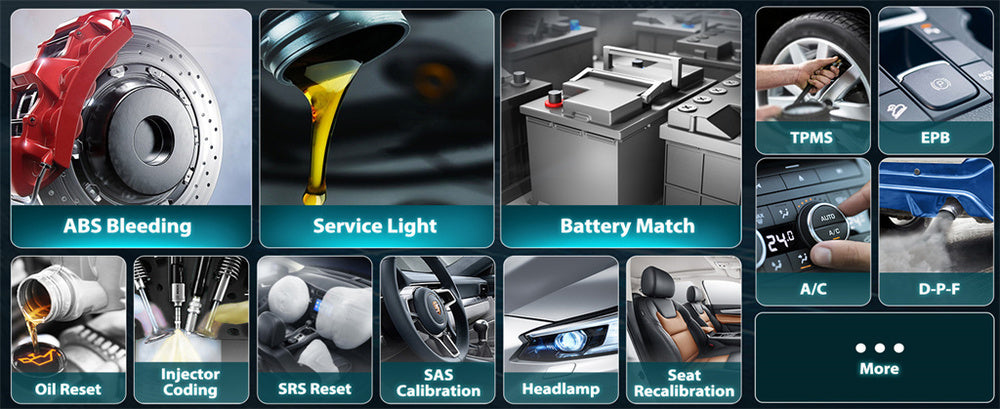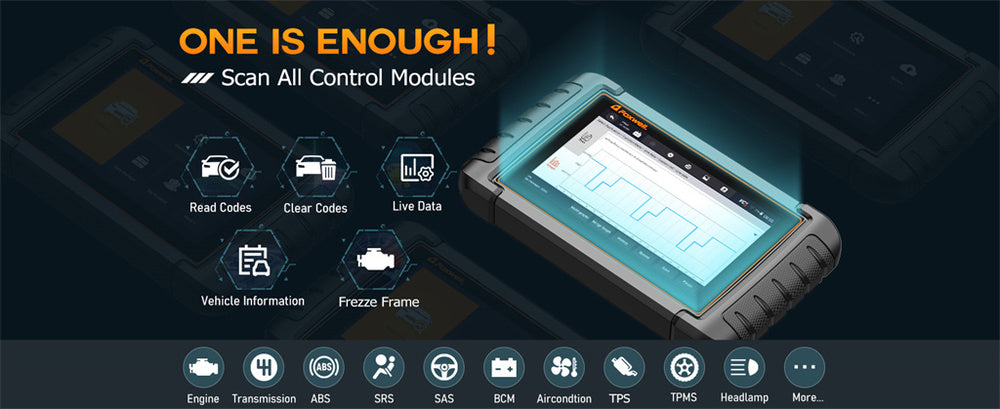As a proud owner of a Toyota Corolla Cross, you may have wondered how you can best maintain your vehicle and catch potential issues early.
One question that often comes up is whether this model supports OBD2 scanners for diagnostics. Using an OBD2 scanner can provide crucial insights into your car’s health, alerting you to issues that may need attention before they turn into more serious (and costly) problems.
We’ll answer your questions about OBD2 scanner compatibility, show you how to use one effectively, and address any common challenges you might face when connecting a scanner to your Toyota Corolla Cross.
Location and Identification of the OBD2 Port in the Toyota Corolla Cross

One of the most practical aspects of using an OBD2 scanner is knowing where to find the port. In the Toyota Corolla Cross, the OBD2 port is strategically placed for easy access.
Typically located beneath the dashboard on the driver's side, it can often be found near the steering column or by the driver’s left knee. The port itself is trapezoidal with 16 distinct pins, making it recognizable.
Identifying this port ensures you can quickly plug in your OBD2 scanner for diagnostics, even if you’re not mechanically inclined.
This accessibility is crucial for car owners who want to perform quick checks and clear diagnostic trouble codes (DTCs) efficiently.
Compatibility Analysis of OBD2 Scanners with the Toyota Corolla Cross
The Toyota Corolla Cross is compatible with a variety of OBD2 scanners, from basic code readers to more advanced diagnostic tools.
This vehicle typically supports the CAN (Controller Area Network) protocol, a standard in newer models, allowing it to work seamlessly with most modern OBD2 scanners. One highly recommended tool that aligns with these requirements is the Foxwell NT809.
The Foxwell NT809 is an all-in-one OBD2 diagnostic tool designed to offer extensive functionality beyond basic code reading.
It features a large, easy-to-use touchscreen interface that simplifies the process of navigating through various diagnostic options.
This scanner can read and clear diagnostic trouble codes (DTCs), stream live data, and conduct thorough system checks for the engine, transmission, ABS, airbag systems, and more.
It supports a wide range of protocols, ensuring compatibility with the Toyota Corolla Cross’s CAN system.
Another standout feature of the Foxwell NT809 is its automatic VIN (Vehicle Identification Number) detection, which accelerates the diagnostic process by quickly identifying your vehicle.
This is particularly useful for Corolla Cross owners who want efficient, in-depth vehicle analysis. Additionally, its updateable software ensures that you stay current with the latest vehicle diagnostics and code databases, enhancing the tool’s longevity and effectiveness.
Choosing a powerful tool like the Foxwell NT809 not only simplifies vehicle diagnostics but also provides Corolla Cross owners with a comprehensive solution for maintaining their car's optimal performance.
How to Use an OBD2 Scanner to Diagnose the Toyota Corolla Cross
Using an OBD2 scanner involves a few simple steps that any vehicle owner can follow:
- Prepare the Vehicle: Ensure the vehicle is turned off before connecting the scanner.
- Connect the Scanner: Plug the OBD2 scanner into the port located under the dashboard.
- Power On the Ignition: Switch the ignition to the 'On' position without starting the engine to activate the vehicle’s computer system.
- Initiate the Scan: Follow the scanner’s menu to start the scan. Some scanners may require selecting specific systems or performing an overall diagnostic.
- Review the Results: Once the scan is complete, the scanner will display any DTCs found. These codes can range from basic issues like low battery voltage to more complex problems like emission control faults.
Understanding these steps helps users maintain their vehicle and catch issues early, reducing the risk of expensive repairs in the future.
Common Issues and Considerations When Using an OBD2 Scanner with the Toyota Corolla Cross
Even though using an OBD2 scanner is straightforward, users may encounter certain challenges:
- Connection Errors: Ensure that the scanner is firmly connected and that no loose wires interfere with the process.
- Unsupported Scanners: Some older or basic scanners may not recognize all the latest protocols used in newer Corolla Cross models.
- Code Interpretation: While most scanners display fault codes, interpreting these codes correctly can be challenging without a guide or manual. Users should refer to comprehensive OBD2 code databases or the vehicle’s manual for clarification.
These considerations can help users maximize their diagnostic efficiency and avoid common pitfalls when using an OBD2 scanner.
Supported OBD2 Protocols in the Toyota Corolla Cross and Their Significance
The Toyota Corolla Cross supports various OBD2 protocols, the most common being the CAN protocol.
This protocol is used in most modern vehicles and allows faster data transfer between the vehicle's computer systems and the scanner.
Knowing the supported protocols is essential when choosing a scanner, as not all devices may be compatible with newer CAN systems.
Ensuring that your scanner supports the specific protocol used by the Corolla Cross will provide better performance and more accurate diagnostics.
How to Read and Interpret Fault Codes from the Toyota Corolla Cross Using an OBD2 Scanner
Reading and interpreting fault codes is one of the most valuable uses of an OBD2 scanner:
- Retrieving Codes: After running a diagnostic scan, the OBD2 scanner displays a list of DTCs.
- Understanding the Codes: Each code corresponds to a specific issue. For example, a code like P0301 indicates a cylinder 1 misfire.
- Using Resources: Use the scanner’s manual or online databases to understand the code's meaning and determine the severity of the issue.
Interpreting these codes accurately helps users decide whether they can resolve the issue independently or need professional assistance.
Solutions for Connection Issues Between OBD2 Scanners and the Toyota Corolla Cross
If you encounter connection issues when using an OBD2 scanner:
- Check Compatibility: Ensure your scanner supports the CAN protocol if using it on the Corolla Cross.
- Inspect the Port: Clean the OBD2 port to remove any dust or debris that could hinder the connection.
- Reset the Connection: Unplug the scanner, restart the vehicle's ignition, and reconnect to try again.
Addressing these common issues can ensure a smoother diagnostic process and more reliable results.

Conclusion
Keeping your Toyota Corolla Cross in top condition is easier when you have the right tools at your disposal.
An OBD2 scanner like the Foxwell NT809 is a powerful ally for any vehicle owner, allowing you to understand your car's health, troubleshoot issues quickly, and avoid unexpected repair costs.
By knowing how to locate the OBD2 port, choose the right scanner, and interpret fault codes accurately, you’ll empower yourself to handle vehicle maintenance with confidence.
Whether you're using a scanner for basic diagnostics or more advanced analysis, understanding its functions can make vehicle care a seamless part of your routine.
FAQs
Will any OBD2 scanner work on any car?
Not all OBD2 scanners are universally compatible with every vehicle. While most OBD2 scanners will work with cars produced after 1996, ensure that your scanner supports the specific OBD2 protocol your vehicle uses, such as CAN, ISO, or KWP2000.
What year did Toyota go to OBD2?
Toyota began using OBD2 systems in their vehicles starting in 1996, in compliance with regulatory requirements for on-board diagnostics in the United States.
How do I know if my vehicle is OBD2 compatible?
To check if your vehicle is OBD2 compatible, look for a sticker or label under the hood or near the driver’s side dashboard indicating “OBD2 compliant” or “OBD II.” Additionally, vehicles manufactured after 1996 are generally OBD2 compatible.




Leave a comment
This site is protected by hCaptcha and the hCaptcha Privacy Policy and Terms of Service apply.